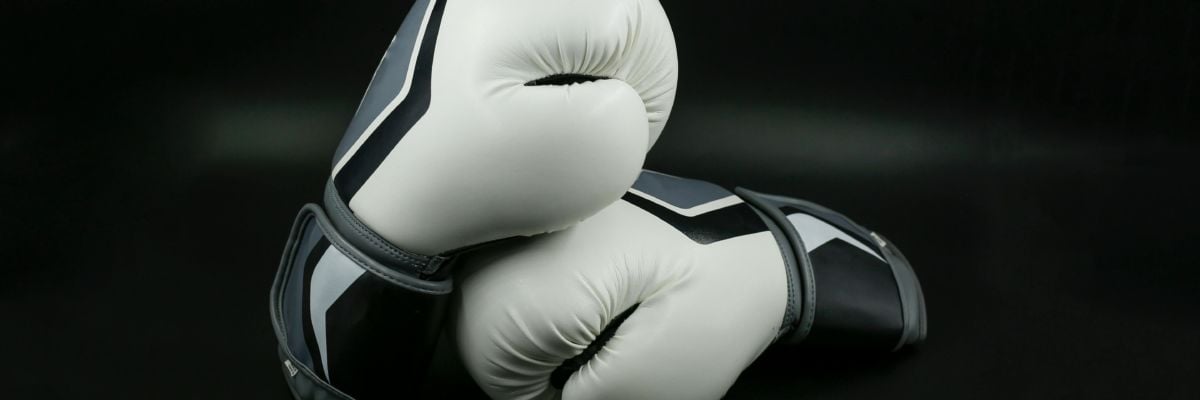
What did Peter and John see at the tomb? The burial cloths from the body of Jesus. John could have just told us that the tomb was empty and skipped to the part where they meet the risen Jesus later. But he gives us all these details.
The grave clothes are a clue—but to what? A robber would have no interest in leaving them neatly in place. Nor would they have been easy to remove, coated as they were with myrrh and aloes, sticky and fragrant substances that would make the shroud stiff. What lay there was likely a sort of collapsed husk, the death shroud strangely emptied of its content, left as a witness to some strange event.
Having run to the tomb and noticed the cloth, the disciples almost immediately run back.
John tells us that they did not yet understand. Perhaps that is why they run away, leaving Mary Magdalene wandering near the tomb. She is the one who meets Jesus first.
All of these pieces mean something to John. They lack the whiff of some made-up story, some wishful-thinking fantasy meant to promote this wild new institution called the Christian Church. They are too raw, too unflattering, if we’re honest, to the disciples. They have no agenda here aside from telling what they saw.
Some time later, in the sermon we read today in Acts, Peter says that they were “chosen witnesses,” but at this point they radiate confusion more than anything else. They don’t understand yet the Resurrection, much less the good news that Peter preaches in Acts: that “he is the one appointed by God as judge of the living and the dead.”
No wonder, we might say. It’s an odd way of summarizing what is good news about the Resurrection. For we can easily imagine other takes: praise God, our dear friend is alive again! Since Jesus is risen from the dead, we now have proof that death is not the end! Or: Now the true Messiah has given us supernatural power over our enemies, so we can drive out the Romans with the power of God on our side!
Instead, we get this claim about judgment.
But Jesus has prepped us, and the disciples, at least a bit. Back in John 12, he said, “Now is the judgment of this world, now shall the ruler of this world be cast out.” Those are fighting words, just the sort that zealots in first-century Judea wanted to hear, but for Peter and the disciples, it seems that the evidence of this judgment and this casting out is clear only after the Lord’s death and resurrection.
For it turns out that the enemy wasn’t the Romans. It wasn’t even the Pharisees or the Sadducees or the Herodians or any of the other bad actors on the scene. The enemy was hell and death, sin and the devil. The enemy was the depravity and corruption of human nature.
As we sing in the Easter sequence:
Death and life have contended
In that combat stupendous:
The Prince of Life, who died,
reigns immortal.
Or, as St. Chrysostom puts it in his famous homily: “Hell took a body, and found God.”
For Peter, the good news is that Christ is the victor in this fight—have mercy, victor king!—and that he is therefore the judge—the authority—over life and death. This isn’t just some nice observation about life’s resilience, or spring, or good memories about the past. It is a politically dangerous claim that the true authority isn’t Caesar, or Herod, or the chief priests, but this God-Man who has conquered death itself.
“No wonder,” writes Tom Wright, that “the Herods, the Caesars, and the Sadducees of this world, ancient and modern, were and are eager to rule out all possibility of actual resurrection. . . . It is the real world that the tyrants and bullies . . . try to rule by force, only to discover that in order to do so they have to quash all rumors of resurrection, rumors that would imply that their greatest weapons, death and destruction, are not after all omnipotent.” Death is still around—much like that hollow burial shroud. But it has been robbed of its substance. This is the truth that the early Christians lived and died for; had they meant something merely spiritual, merely symbolic, they would have been no threat.
But again we have to insist that Resurrection alone doesn’t fully describe what Peter sees as the good news. The real good news is that the resurrected one, the judge vested with all authority over life and death, is our friend. He is one of us. He is not some distant, impartial figure. He is Mary’s boy from Nazareth. He is the man who healed the blind, the lame, the sick; the man who fed us, who cried with us, who bled with us, and who did it with love and joy, even when we were the ones making him bleed and cry, because he loved us so much. What else in the world really matters if we can really be friends with him?
We could read and fill many books thinking about how the Incarnation, the cross, and the Resurrection reconcile us to God, how they fix the problem of sin and death in battle stupendous. Yet the invitation to Easter isn’t first to understand as much as it is to wonder: to stand in amazement and joy at the offer of eternal friendship with God. Being so amazed, should we not also, like Peter and John, run with wild, childlike enthusiasm toward the Lord?



